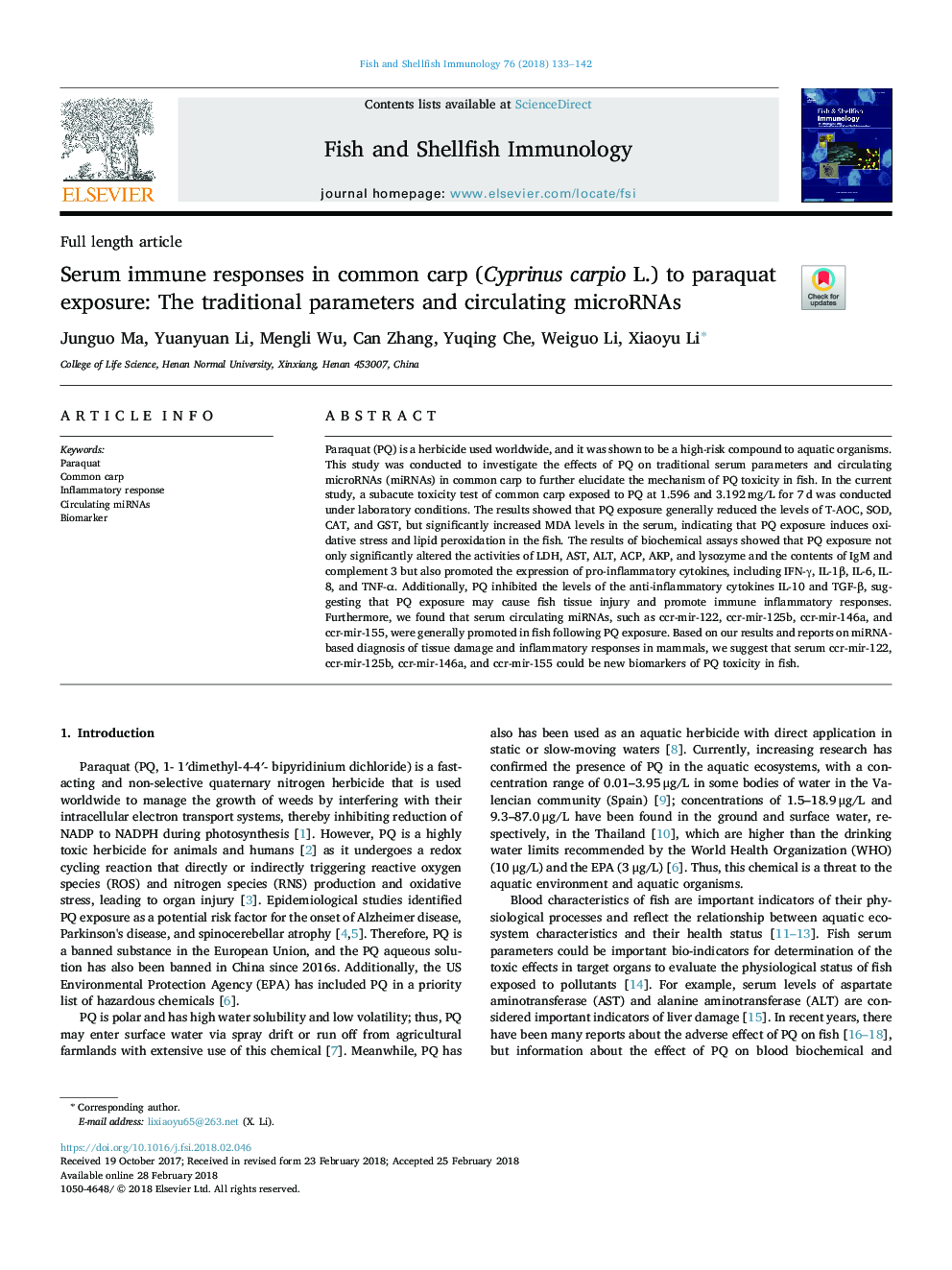| Article ID | Journal | Published Year | Pages | File Type |
|---|---|---|---|---|
| 8498513 | Fish & Shellfish Immunology | 2018 | 10 Pages |
Abstract
Paraquat (PQ) is a herbicide used worldwide, and it was shown to be a high-risk compound to aquatic organisms. This study was conducted to investigate the effects of PQ on traditional serum parameters and circulating microRNAs (miRNAs) in common carp to further elucidate the mechanism of PQ toxicity in fish. In the current study, a subacute toxicity test of common carp exposed to PQ at 1.596 and 3.192â¯mg/L for 7â¯d was conducted under laboratory conditions. The results showed that PQ exposure generally reduced the levels of T-AOC, SOD, CAT, and GST, but significantly increased MDA levels in the serum, indicating that PQ exposure induces oxidative stress and lipid peroxidation in the fish. The results of biochemical assays showed that PQ exposure not only significantly altered the activities of LDH, AST, ALT, ACP, AKP, and lysozyme and the contents of IgM and complement 3 but also promoted the expression of pro-inflammatory cytokines, including IFN-γ, IL-1β, IL-6, IL-8, and TNF-α. Additionally, PQ inhibited the levels of the anti-inflammatory cytokines IL-10 and TGF-β, suggesting that PQ exposure may cause fish tissue injury and promote immune inflammatory responses. Furthermore, we found that serum circulating miRNAs, such as ccr-mir-122, ccr-mir-125b, ccr-mir-146a, and ccr-mir-155, were generally promoted in fish following PQ exposure. Based on our results and reports on miRNA-based diagnosis of tissue damage and inflammatory responses in mammals, we suggest that serum ccr-mir-122, ccr-mir-125b, ccr-mir-146a, and ccr-mir-155 could be new biomarkers of PQ toxicity in fish.
Related Topics
Life Sciences
Agricultural and Biological Sciences
Aquatic Science
Authors
Junguo Ma, Yuanyuan Li, Mengli Wu, Can Zhang, Yuqing Che, Weiguo Li, Xiaoyu Li,
